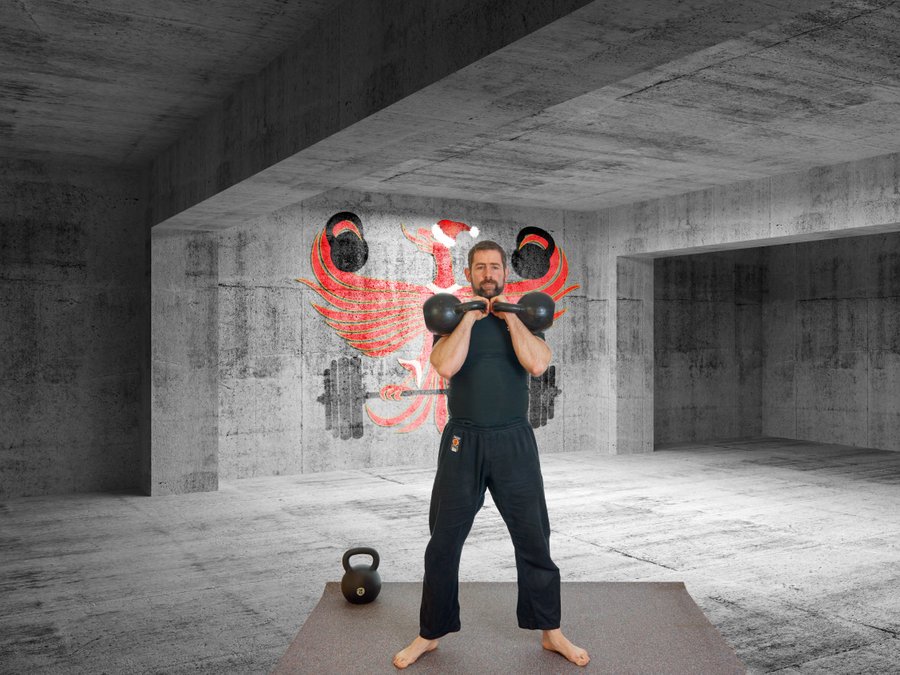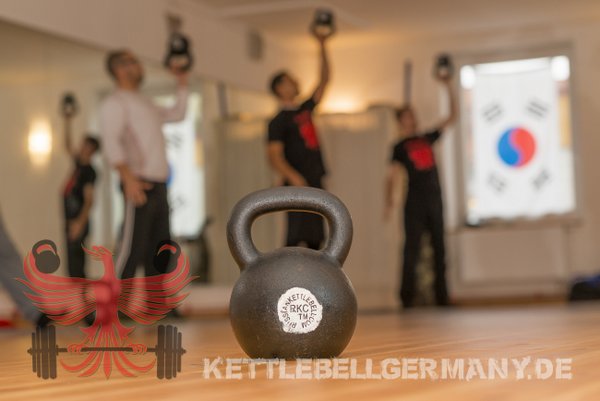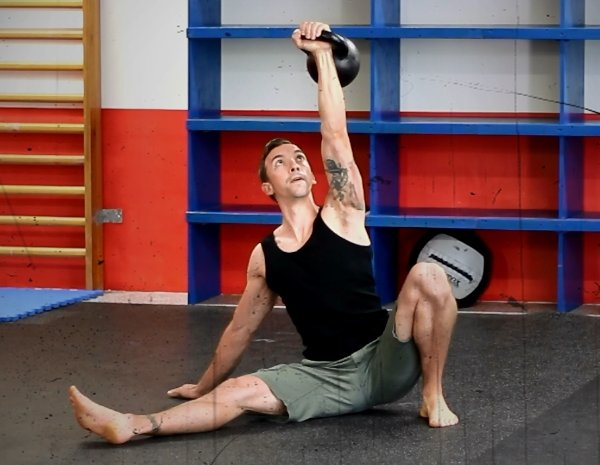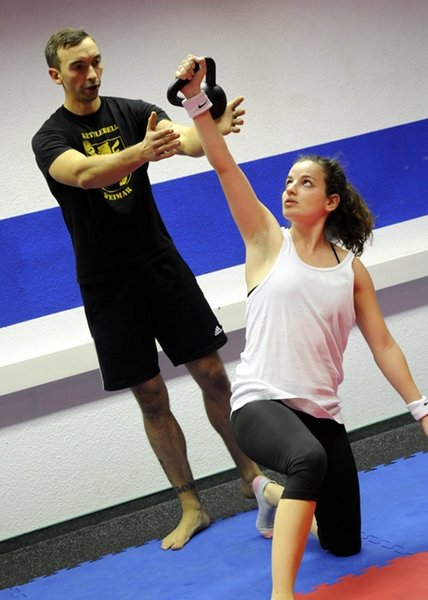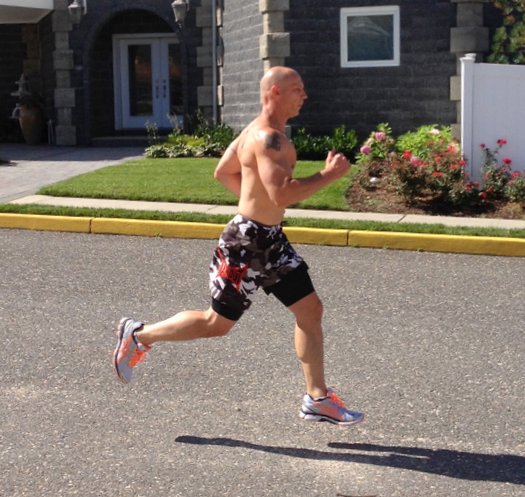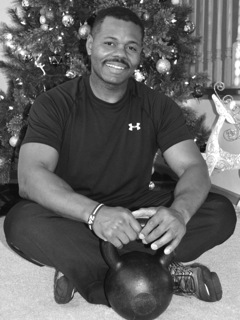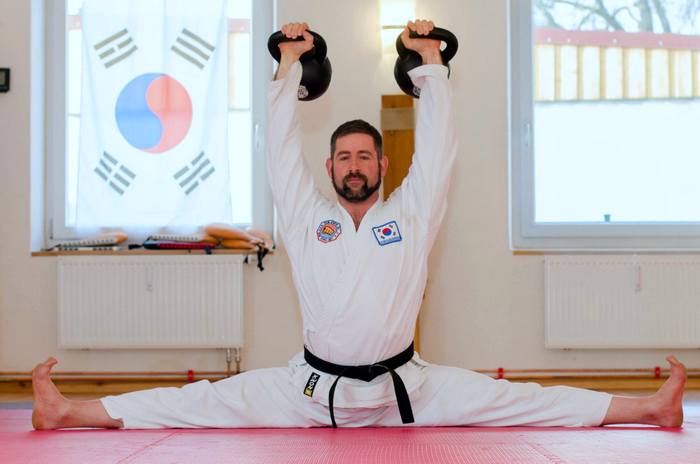
Because I come from a classical, non-contact school of Tae Kwon Do, the RKC has caused huge a paradigm shift in the way I approach my training. Many classical martial arts have a Zen like approach—just do the movements and see what they will teach you over time.
A fellow taekwondo friend, Valentino Solinas from Italy, recently posted a quote that sums up this idea:
“You may begin the study of martial arts and you may quit the study of martial arts, but you can never complete the study of martial arts…”
Training with this mindset can eliminate potential frustration if results are not coming easily or quickly. This mindset also reduces competitiveness among students which can sometimes otherwise lead to hubris and all its related problems.
Even if progress seems stifled, training with this mindset can be very rewarding over many years—regardless of one’s physical condition at the beginning. I have witnessed my former teacher’s mother start practicing Tae Kwon Do several times a week even though she is well over 70 years old and has a medical history that could fill a book. She once told me if she had known how good this training would make her feel, she would have started much earlier and that it might have prevented many of her health concerns. There’s no way she would ever learn to kick to head level or do a controlled spin kick, but it did not matter. She trained with beginners and black belts—and I think she taught everyone a lesson for life. Her last training session was one day before she died.
My RKC Epiphany
When I was introduced to RKC kettlebell training in 2009, I had the martial arts mindset. It struck me from the beginning when many concepts I had intuitively grasped over many years of training were explained to me in mere minutes in plain and simple words. How much easier could I make it for my students if I used the RKC teaching concepts? With a deep understanding of human movement, training progress can be planned and obstacles avoided before they even show their ugly faces. To me this was an epiphany and it immediately changed my views on training. I started learning and experimenting with it and continue to today.
In recent years, I learned how to integrate both systems to fill gaps or avoid roadblocks for my students and I. I want to give two examples—one I use in my own training sessions and one I use to teach my students how to perform better kicks.
Integrating Taekwondo Forms in Kettlebell Sessions
One example of combining my martial arts practice with my kettlebell training is to use Tae Kwon Do Hyongs as a warm up or in between my strength sets as physical and mental resets.
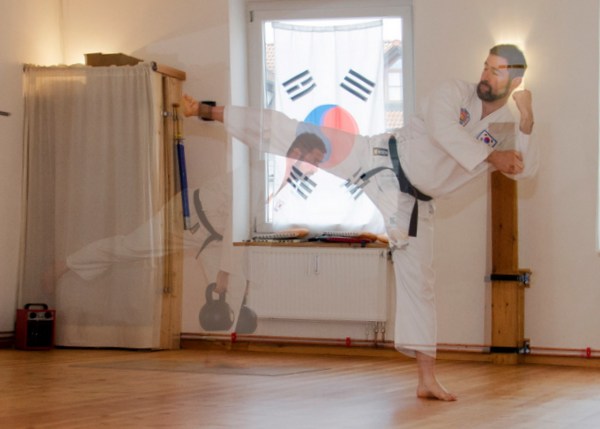
Hyongs are predefined sets of movements that simulate combat against several attackers. The higher the form, the more difficult and complex it is—some forms have more than 100 movements. Hyongs present a martial arts movement flow that allows a student who has mastered the general flow of the form to immerse himself in the movements. The student will also learn to understand the movements in the context of a fight. There is a massive difference between performing a single strike, blow or block in practice and performing the same movement in context of a series of attacks and parries. In the time before protective gear was available, these forms presented the only option for practicing combat situations with full force without risking injury to oneself or a sparring partner.
By integrating Hyongs into my kettlebell sessions I gain big benefits:
- Most of the movements are performed over a full range of motion, and work as a complete reset of all major joints.
- All movements are executed with full force, but without any external resistance or long isometric contractions. Every muscle is activated without getting fatigued.
- The quick movements ensure that I don’t get tight or stiff.
- I get to practice my Hyongs more often 😉
- The average Hyong takes 30 or more seconds to perform and is non-taxing aerobic activity between sets.
- Most forms are complex enough to require enough concentration that an advanced practitioner will enter an almost meditative state of mind. This works as an effective mental reset, if the last set did not go well and my mind is distracted, the forms will help me avoid a downward spiral.
Using Tension Techniques to Teach Better Kicks
From all martial arts I know, Tae Kwon Do has the highest physical demand. Bringing your leg to head level with force and accuracy takes extreme mobility, crazy-strong hips and superb coordination. All these perquisites don’t come easy, especially if you start past your twenties.
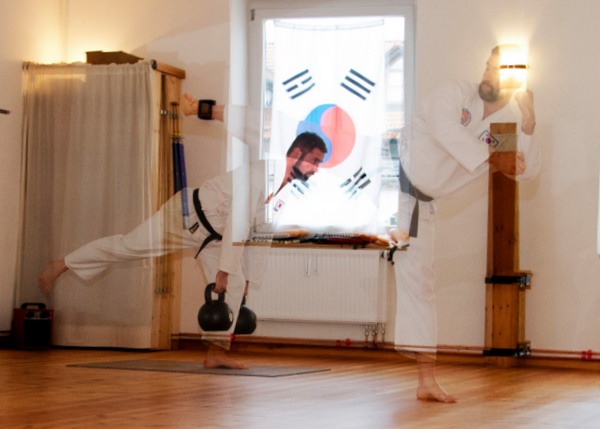
For years I watched new students explore these new movements with varying success—some are naturals who walk in the Dojang and start training as if they never did anything else, and they are a pleasure to teach. On the other hand, some train for years and years with dedication and simply do not progress past a very basic level. When I started holding Tae Kwon Do lessons in my first teacher’s school, I assumed that it was something genetic, a Tae Kwon Do gene that made the difference!
After learning and understanding the concept of tension, I made an effort to integrate the drills and techniques we use in the RKC for teaching a good swing, snatch or military press in my Tae Kwon Do lessons to facilitate good kicking mechanics.
The fundamental concept is the same for kettlebell swing and high kicks—the tighter we stay while only moving the necessary joints to accomplish the task, the more force we can generate.
By adding the RKC tension techniques to my Tae Kwon Do sessions, I managed to create “aha”-moments for my students so the would know how it feels when the technique is executed correctly.
Here’s how:
- I demonstrate a drill or technique and have my students practice it for a while.
- As soon as they have the general idea, I let them practice on their own or with a partner and observe which problems occur.
- Usually I find a pattern that could be improved and I try to figure out which drills could help.
- I stop the practice and have them do the drill that I assume will help the most.
- Immediately afterwards we return to the original exercise and see if it worked.
- Sometimes it takes several attempts to find the drill that will work best or we may use more than one to address the different issues.
Using this approach, black belts have come to me after the session saying things like, “I finally understand how to execute this technique!”
Conclusion
Don’t see the RKC System as a closed environment, or the drills we use as special and exclusive to the kettlebell. Experiment with different combinations and observe the results. The RKC System is designed to improve any athletic endeavor. Be creative and learn the best ways to improve your game.
Have Fun.
He writes a regular Blog at blog.kettlebellgermany.de and offers workshops all over Germany teaching the RKC Kettlebell exercises: KettlebellGermany.de.
If you have questions or comments on the article feel free to email him at florian@kettlebellgermany.de
